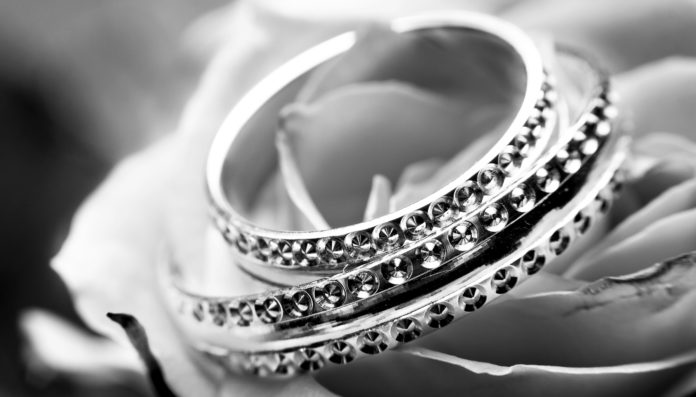Diamonds have many fake counterparts, which can look like real diamonds. So, you must make sure whether you’re dealing with a diamond real or fake! The colorless natural gems like topaz, sapphire, and zircon come under real jewelry and have similarities with diamonds. There also exist many gems which are produced in labs like gadolinium gallium garnet, yttrium aluminium garnet, synthetic moissanite, and synthetic cubic zirconia. Such gems that are created in labs appear diamond alike to general people, and that’s why it gets harder to judge the quality of diamond by seeing through naked eyes. Diamonds come in a pool of sizes, colors, as well as shapes. All diamonds hold different combinations of characteristical attributes that make each of them exclusive. You must know the quality of diamond you’re bearing and know; how to choose a diamond if you’re planning to buy one.
Collecting information about whether the diamond real or fake before buying, may prove to be actually beneficial for the customers. While doing so, you may use the grading system associated with the real jewelry that jewel-experts prefer to use.
The best way to know the quality of diamond is via 4C’s, which are:
- Color
- Clarity
- Cut
- Carat Weight
All of the above four elements are equally essential while measuring the quality of a diamond.
Five expert ways to answer your most significant query, i.e., how to choose a diamond:
Size (Carat Weight) of the Diamond
Carat weight basically indicates the size of a diamond. A calibrated digital scale is being used to measure the carat weight of a diamond. Diamond’s value, as well as quality, is combined, represents its weight.
The most fundamental unit to represent the Carat weight of a diamond is Decimal. It’s imperative to know that the quality and price of a diamond shouldn’t be considered according to carat weight. A two-carat diamond attaining high quality can be expensive than a three-carat diamond having reduced attributes like color, clarity, and cut.
In simple words, considering only one C among the 4C’s will prove to be a wrong move; All the four components of the 4C are considered equally while determining the quality of the diamond.
Actuating Diamond’s Quality based on its Color
The color of a diamond plays a significant role while trying to know its quality. It is strange because a flawless diamond is one that is colorless. If there’s a little bit tinge of any color in the diamond, then it makes it less valued.
While determining the color quality of a diamond, a 23-color grading scale is used that ranges from letter D to letter Z. All letters within the range are divided into the five subcategories of the diamond’s color quality.
Five attributes of the GIA diamond color grading scale are:
- D-F (Colorless)
- G-J (Near Colorless)
- K-M (Faint)
- N-R (Very Light)
- S-Z (Light)
The more colorless the diamond, the more valued it will be. Though the surroundings, the setting or metal of the background may also affect the color of the diamond. Naturally, it can be said that a one-carat colorless diamond will be of higher quality than a five-carat diamond of either N or S color grade.
If you want to determine the color quality all by yourself, then the most obvious way to do it is to turn the diamond’s face to the downside and place it on a white paper-sheet in a properly-lit room. It will help you detect any color-tint more significantly. An essential tip here is that merchants who sell lower color graded diamonds, intend to show you its color by showing you diamond from the top. Just focus on watching it from all the sides before making a purchase.
Deciding Clarity Standards of a Diamond
The clarity standard of the diamond is also an essential element to consider. A perfect diamond owns no surface imperfections, whether a lower clarity standard diamond has some unwanted inclusions that can be detected very easily by anyone if appropriately seen. The diamonds with reduced clarity will be more prone to be cracked or shattered.
Clarity is graded when the diamond is tested using 10x magnification. It can be represented via 11 clarity grades. One should know these grades before deciding to purchase a diamond.
Clarity levels under 10x magnification are:
- Flawless (FL) diamonds include no blemishes.
- Internally Flawless (IF) diamonds include no internal imperfections, though may have a few surface flaws.
- Very, Very Slightly Included, i.e., (VVS1) and (VVS2) diamonds introduce slight inclusions which are hard to detect even after using magnification.
- Very Slightly Included (VS1) and (VS2) diamonds show tiny inclusions that can be searched through magnification but challenging to see through the naked eye.
- Slightly Included (SI1) and (SI2) diamonds have considerable inclusions that can be seen by the naked eye as well as magnification.
- Included (I1), (I2), and (I3) diamonds have apparent inclusions that are very easily visible.
The easiest way to determine the color grading standard of a diamond is an ‘eye clean’ technique. It means that if you’re not able to see any imperfection in the diamond through the naked eye, it indicates that you’re going to buy a good diamond.
Cut Element of a Diamond
A diamond that is well-cut sparkles when each angle and side of the diamond gets connected with light. The perfectly cut diamond includes three optical effects that are:
- Brightness: Shows the white light reflection.
- Fire: Indicates the flashes of color the diamond shows when light refracts through a prismatic effect.
- Scintillation: It is the resulted combination of the light and dark areas of the diamond.
A perfect cut indicates that the diamond shows the best contrast between dark and light.
Basically, a 10 point cut grading scale is used to judge the quality of diamond:
- 0 (Ideal Cut)
- 1 (Excellent Cut)
- 2 (Very Good Cut)
- 3-4 (Good Cut)
- 5-7 (Fair Cut)
- 8-10 (Poor Cut)
The cut can be referred to as shape, as in diamond’s case. The most suitable way to judge the cut quality is to see a diamond personally. To come up with the best decision, check the diamond in different light conditions. If it shows no lighting, then the diamond should be bought as flawless diamonds don’t produce light on their own.
Certification of a Diamond
A diamond certification can be explained as a documentation of a diamond’s quality standard provided by a third party. This certification is not from the seller or buyer.
These diamond certificates show different security features to indicate that they are original. Some of the top diamond graders in the U.S., as well as Europe, are:
- GIA (Gemological Institute of America)
- EGL (European Gemological Laboratory)
- AGS (American Gemological Society)
- IGI (International Gemological Institute)
- HRD (Diamond High Council)
- CIBJO, i.e., International Confederation of Jewelry, Silverware, Diamonds, Pearls, and Stones
To check your diamond’s quality, you must know the 4Cs as well as choose a diamond that is certified by a well-known, gemological laboratory.

















